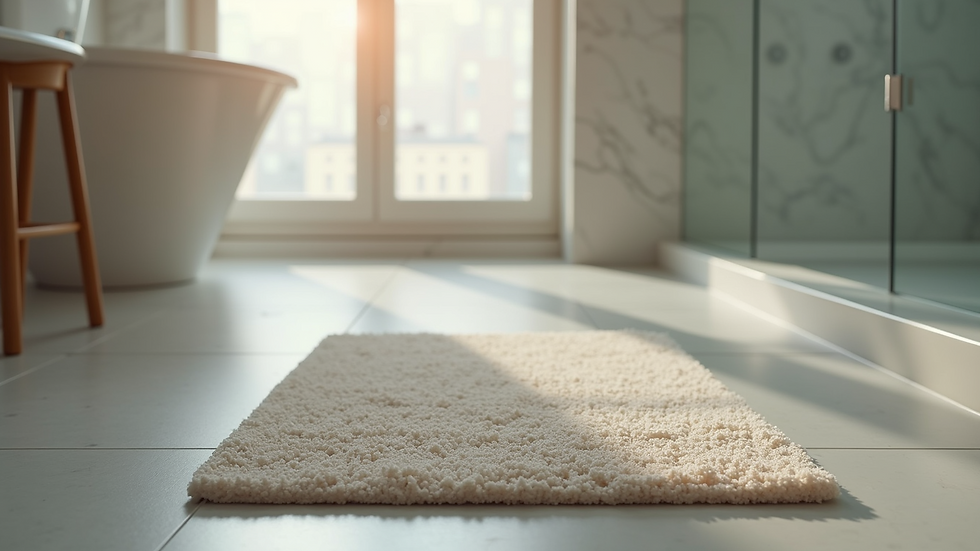Creating a Safe Home for Seniors
- MEDAccess Inc.

- Jul 29
- 3 min read
Creating a safe living environment for seniors is essential to promote independence and prevent accidents. As people age, their mobility, vision, and reaction times may decline, increasing the risk of falls and injuries at home. By making thoughtful adjustments and adopting practical safety measures, you can help ensure that seniors live comfortably and securely in their own homes.
Understanding Senior Home Safety Tips
Safety in the home is a top priority for seniors and their caregivers. Simple changes can make a significant difference in reducing hazards. Here are some key senior home safety tips to consider:
Improve Lighting: Ensure all rooms, hallways, and staircases are well-lit. Use nightlights in bedrooms and bathrooms to prevent trips during nighttime visits.
Remove Clutter: Keep floors clear of loose rugs, electrical cords, and other obstacles that could cause tripping.
Install Grab Bars: Place grab bars in bathrooms near toilets and inside showers or bathtubs to provide support.
Use Non-Slip Mats: Place non-slip mats in the bathtub and on slippery floors.
Secure Furniture: Anchor heavy furniture to walls to prevent tipping.
Check Smoke and Carbon Monoxide Detectors: Test these devices regularly and replace batteries as needed.
These tips are easy to implement and can greatly reduce the risk of accidents.

Essential Modifications for a Senior-Friendly Home
Beyond basic safety tips, some homes may require more extensive changes to accommodate seniors’ needs. These modifications can enhance mobility and accessibility, making daily activities easier and safer.
Widen Doorways: To accommodate walkers or wheelchairs, doorways may need to be widened.
Lower Countertops and Cabinets: Adjust kitchen and bathroom fixtures to be within easy reach.
Install Ramps: Replace stairs with ramps or add ramps alongside stairs for easier access.
Use Lever-Style Door Handles: These are easier to operate than traditional knobs, especially for those with arthritis.
Upgrade Flooring: Choose smooth, non-slip flooring materials that reduce fall risk.
For professional advice and installation, consider consulting experts in elderly home modifications who specialize in creating safe and accessible living spaces.

Bathroom Safety: A Critical Area for Seniors
Bathrooms are one of the most hazardous areas in a home for seniors due to wet surfaces and limited space. Implementing safety measures here is crucial.
Install Grab Bars: Securely mount grab bars near the toilet and inside the shower or tub.
Use a Shower Chair: A sturdy chair can provide stability while bathing.
Add a Handheld Showerhead: This allows for easier washing while seated.
Place Non-Slip Mats: Use mats both inside and outside the shower or tub.
Consider a Walk-In Tub: These tubs reduce the need to step over high edges.
Regularly check plumbing fixtures to prevent leaks that can cause slippery floors. These changes can help seniors maintain independence while reducing injury risk.

Kitchen Safety Tips for Seniors
The kitchen can also pose risks, but with some adjustments, it can be a safe and functional space.
Organize Frequently Used Items: Keep everyday items within easy reach to avoid climbing or stretching.
Use Appliances with Safety Features: Choose devices with automatic shut-off and easy-to-use controls.
Install Good Lighting: Bright lighting helps prevent accidents while cooking.
Avoid Rugs: Rugs can cause trips; use non-slip mats instead.
Keep Floors Clean and Dry: Wipe up spills immediately to prevent slips.
Encourage seniors to use timers and avoid multitasking while cooking to reduce distractions and accidents.
Creating a Fall Prevention Plan
Falls are a leading cause of injury among seniors. Developing a fall prevention plan can help minimize risks.
Regular Exercise: Encourage activities that improve balance and strength, such as walking or tai chi.
Vision and Hearing Checks: Regular exams ensure sensory impairments do not contribute to falls.
Medication Review: Some medications can cause dizziness; consult healthcare providers to manage side effects.
Use Assistive Devices: Canes, walkers, or other aids should be used as recommended.
Emergency Response Systems: Consider wearable alert devices that can summon help if a fall occurs.
By combining environmental changes with lifestyle adjustments, seniors can enjoy safer, more confident living.
Maintaining a Safe and Comfortable Home Environment
Safety is an ongoing process. Regularly inspect the home for new hazards and update safety measures as needed. Encourage open communication so seniors feel comfortable discussing their needs and concerns.
Simple habits like keeping pathways clear, checking smoke detectors, and ensuring easy access to emergency contacts can make a big difference. Remember, a safe home supports not only physical health but also emotional well-being and independence.
Taking proactive steps today can help create a secure and welcoming home where seniors thrive.


Comments